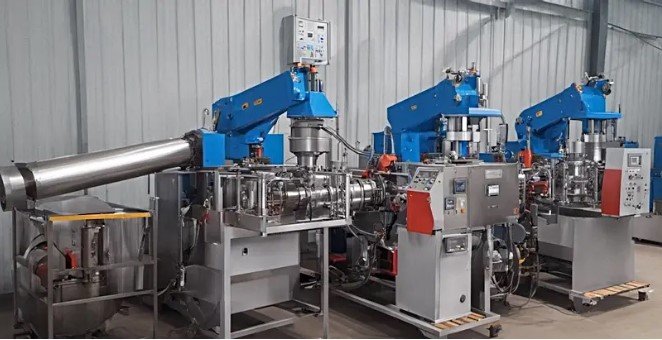**The Hidden Cause of Masked High Blood Pressure**
High blood pressure, or hypertension, is often called the “silent killer” because it can cause significant damage to the body without showing any symptoms. However, there is an even more insidious variant of this condition known as masked hypertension. This form of hypertension is particularly dangerous because it goes undetected during routine medical visits, but it still poses the same risks as regularly diagnosed high blood pressure. Understanding the hidden causes of masked high blood pressure is crucial for effective diagnosis and treatment.
What is Masked High Blood Pressure?

Masked hypertension occurs when a patient’s blood pressure readings are normal in a clinical setting but elevated when measured outside the doctor’s office. This phenomenon is the opposite of “white coat hypertension,” where patients exhibit high blood pressure in a clinical setting but have normal readings elsewhere. Masked hypertension can affect a significant portion of the population, with estimates suggesting that around 10-20% of people with normal office blood pressure readings may actually have masked hypertension.
The Dangers of Masked Hypertension
The primary danger of masked hypertension lies in its ability to go unnoticed during routine check-ups. Since it is not detected in a clinical setting, patients may be falsely reassured that their blood pressure is under control. Meanwhile, the elevated blood pressure outside the doctor’s office continues to exert strain on the cardiovascular system, increasing the risk of heart disease, stroke, and other complications. The long-term effects can be as severe as those of sustained hypertension, including damage to the heart, kidneys, and blood vessels.
Hidden Causes of Masked Hypertension
Several factors contribute to masked hypertension, many of which are related to lifestyle, stress, and the environment.
1. **Stress and Anxiety**
One of the most significant hidden causes of masked hypertension is stress. In many cases, people may feel more relaxed in the controlled environment of a doctor’s office, leading to normal blood pressure readings during a visit. However, when they return to their everyday lives, the stressors of work, family responsibilities, and other pressures can cause their blood pressure to rise. Chronic stress triggers the release of hormones like cortisol and adrenaline, which can increase heart rate and blood pressure, leading to masked hypertension.
2. **Physical Activity Levels**
Physical activity can also play a role in masked hypertension. People who engage in physical activities may have lower blood pressure readings during doctor visits because they are more relaxed and in a calm state. However, during periods of physical exertion or even during routine activities at home or work, their blood pressure may rise significantly. This fluctuation is not always captured in a single reading taken in a clinical setting, leading to a false sense of security.
3. **Diet and Sodium Intake**
Diet, particularly sodium intake, is another hidden cause of masked hypertension. High sodium levels can contribute to increased blood pressure, but its effects may not be immediately apparent during a doctor’s visit. Some individuals may experience temporary reductions in blood pressure before a medical appointment, either due to fasting, reduced sodium intake before the visit, or temporary lifestyle changes, masking the underlying hypertension. Once they resume their regular diet, the sodium intake can cause their blood pressure to spike again.
**Alcohol and Caffeine Consumption**
Alcohol and caffeine are known to cause temporary increases in blood pressure. If a person consumes these substances regularly, their blood pressure might be elevated during normal daily activities but not during a visit to the doctor’s office, particularly if they avoid these substances before the visit. This can lead to a misdiagnosis, as the effects of alcohol and caffeine may not be evident during the brief window in which blood pressure is measured.
5. **Medication Timing**
Another hidden cause of masked hypertension can be the timing of medication. Some people take blood pressure medications at specific times to ensure lower readings during medical visits. However, these medications may wear off during other parts of the day, causing blood pressure to rise when they are not in the doctor’s office. This timing issue can mask the true nature of their hypertension, making it difficult to diagnose and treat effectively.
The Importance of Accurate Diagnosis
Diagnosing masked hypertension requires a more comprehensive approach than standard blood pressure measurements. Ambulatory blood pressure monitoring (ABPM), where blood pressure is measured at regular intervals over 24 hours, is a valuable tool for detecting masked hypertension. Home blood pressure monitoring can also provide insights into blood pressure levels outside the clinical setting.
Conclusion
Masked high blood pressure is a hidden threat that can lead to serious health complications if left undiagnosed and untreated. Understanding the hidden causes, such as stress, diet, physical activity, and medication timing, is essential for identifying and managing this condition. Regular monitoring and a proactive approach to lifestyle changes are key to preventing the long-term damage associated with masked hypertension. By bringing awareness to this condition, patients and healthcare providers can work together to ensure that hypertension is accurately diagnosed and effectively managed, even when it tries to hide.



